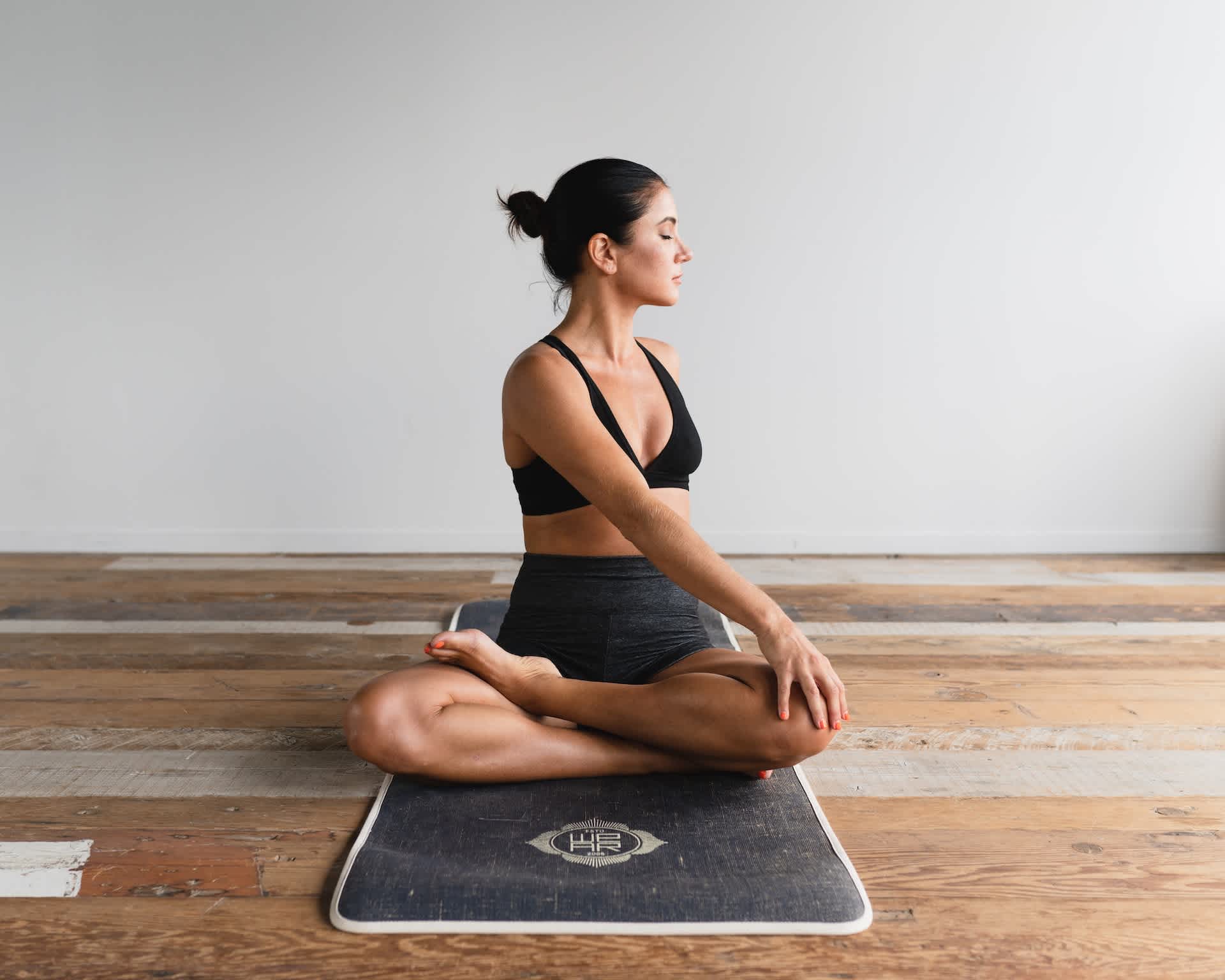Yoga is well known for having numerous and wide-ranging benefits, but how does it fare with breathing? In this article, we take a look at how yoga affects breathing and the respiratory system, how it might impact a range of respiratory conditions, and a few techniques you can try safely at home.
So, how does yoga affect your breathing? Yoga breathing exercises work to improve breathing in 3 ways;
- Improves posture by strengthening the spinal muscles
- Increases movement in the chest and spine
- Improves flexibility and strength of respiratory muscles
There are a number of different yoga breathing techniques, but most work to achieve the above benefits.
Read on to learn more about how yoga breathing techniques improve the respiratory system, as well as a few techniques to try at home.
Can Yoga Breathing Exercises Help with Breathing Problems?
Both yoga breathing exercises and yoga asana maintain the overall health of the respiratory system. However, experts disagree on the benefits of yoga for more severe breathing problems such as moderate to severe asthma.
A well-rounded yoga breathing practice includes calming, balancing and stimulating techniques. This improves the strength and flexibility of the chest muscles, as well as helping to correctly align the ribs and spine.
Such practices may also be effective in improving lung function in those with chronic lung problems. Additionally, yoga breathing practices may help to calm the nervous system and lower stress levels. This can be particularly beneficial to those challenged with a respiratory condition.
Furthermore, with regular yoga breathing exercises, individuals may see an improvement in a number of respiratory conditions such as sinus problems, hay fever, mild asthma and allergies. It may also benefit conditions that are not respiratory in nature but go on to affect breathing, such as scoliosis, injuries and bad physical habits.
How Does Yoga Breathing Exercises Affect Breathing?
Asanas that move the spine and lengthen and stretch the surrounding muscles help to keep the respiratory muscles strong and flexible. Meanwhile, yoga breathing techniques (Pranayama) lengthen inhalation and exhalation, further supporting the respiratory muscles.
In general, yoga works to improve breathing by:
Improving posture by strengthening spinal muscles
Increasing movement in the chest and spine with regular stretching
Improving the flexibility and strength of respiratory muscles
Different techniques are required to target different concerns. However, the above three points are the basis for improving breathing through yoga.
Yoga Breathing Techniques to Try
To achieve the three breathing benefits listed above, here are a few simple and safe techniques to try at home.
Breath Awareness
One of the first things that is taught in yoga practice is breath awareness. It’s like a mirror and reflects an individual's personal state back to them. It can help to determine anxiety, stress or physical health concerns.
Begin by bringing your awareness to your breath. Breathe through the nose and observe the inhalation and exhalation. What’s the depth like? The quality of breath? Direction?
Deep Belly Breathing
Deep belly breathing sends the breath into the belly. It’s our natural, resting state of breathing. In fact, if you observe sleeping babies, they naturally breathe into their bellies at such a young age. This breathing technique calms the nervous system and soothes the stress response in the brain.
With your hands resting on your belly, take a deep breath sending the breath away from the lungs and down to the abdomen. Imagine filling a balloon inside your belly. On the inhale, it expands. On the exhale it deflates. Do this for a few minutes at a time throughout the day.
Ujjayi (“Victorious”) Breath
Ujjayi has been used for thousands of years to help synchronise breath with movement. This technique is conducted by gently constricting the opening of the throat to create air resistance.
The key with this yoga breathing exercise is to stay relaxed. Inhale through the nose, then open your mouth and exhale slowly making a “ha” sound. Try this a few times then close your mouth but keep the back of your throat in the same position you used to create the “ha” sound. Inhale and exhale through the nose.
Kapalabhati
Also known as “Breath of Fire” or “Skull Shining Breath”, this technique is a great way to liven up the body and mind. It’s a good way to kickstart practice when feeling lethargic.
Take a full, deep breath through the nose. Keeping the mouth closed, inhale again and begin exhaling by quickly pulling in the lower abs to force air out in short bursts. Try doing this for 10-20 breaths, take a short break, then try another round.
Other Benefits of Yoga
Yoga breathing exercises not only help the respiratory system, but also have a number of benefits on the rest of the body. These include:
- Reduced stress - studies show that conscious breathing is an effective way to beat stress
- Improved focus - studies have shown that breath-focused yoga helps to boost attention span
- Improved digestion - by reducing stress, breathwork naturally frees up energy that the body can use for digestion. Additionally, Kapalbahti massages the internal organs which is thought to improve digestion.
Final Thoughts
Yoga may not be able to cure a range of conditions, however, yoga breathing techniques may be effective in improving and supporting various conditions. This works by improving posture and strengthening the spinal muscles, increasing movement in the chest and spine, and improving the flexibility and strength of chest muscles.
Regardless of whether or not an individual has a condition to manage, yoga breathing exercises can prove beneficial for all. If you’re interested in learning more about clinical yoga and how it can be introduced into clinical practices, view our Yoga Teacher Training course today. We provide you with everything you need to provide safe and effective clinical yoga practice.
